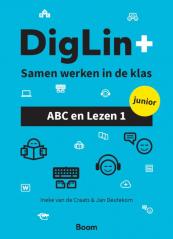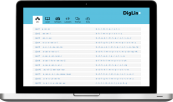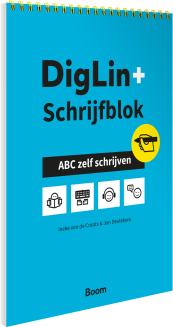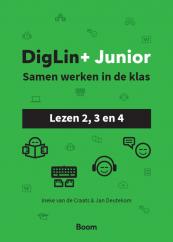DigLin+ for primary education
Every child learns differently
Every child learns differently and at a different pace. Moreover, each student starts learning Dutch with a different linguistic and cognitive baggage. This is why it is so ideal in DigLin+ that students can follow their own pace and route. One student needs more practice for pronunciation or spelling, while another student practices vocabulary more. With targeted instructions, each student does what he needs to achieve a fluent reading pace.
Concrete goals
Children can handle a lot if you give them the right challenge. That's the premise in DigLin+: give them a high expectation or goal and they can do more. DigLin+ challenges them because you have to do everything in time, and thus make or read exercises faster and faster. For example: You can complete this exercise flawlessly in 2.5 minutes on Friday.
Successful with adults
DigLin+ has been successfully used in adult education for years. The didactics and competitive elements have been decisive for this. When schools also showed interest, we decided to adapt the material. We developed a separate reading section - junior - especially for younger students. They now benefit from proven didactics and texts that match their experience and level.
Structure of DigLin+
In the first literacy section, the focus is on learning to read technically. The goal is to learn the sound-sign link as quickly as possible so that a short text can be read. The student gradually works from sounds to words, to sentences, to short texts. With a vocabulary of 320 words you can already start with short sentences. After this phase you start working on sentence comprehension and reading comprehension.
1 hour per day
Every student learns differently and at a different pace. So how and how long you let a student work on DigLin+ Junior varies. We recommend getting started daily, at least 1 hour. Especially in the literacy process, training needs to be quite intensive to make it effective. And repetition is very important. Practicing can be spread throughout the day, for example. For example, when other students are busy with language, writing or reading comprehension.
Own goals and expectations
DigLin+ can be used for a few students in your group or for a whole group. It is important that each student works on their own goals or expectations. These can be smaller or larger expectations. For example: You can write down 5 words of objects from the list today. These can also be big expectations, such as: You can read aloud the words from list 7 fluently and clearly on Friday, and write flawlessly.
Work independently
The teacher sets learning goals, then students work independently to work toward those goals. This is possible because of the endless amount of practice materials/resources and, most importantly, because of the instant feedback. Not only can you see whether it is right or wrong, but thanks to speech recognition, a student also sees immediately how he/she pronounces the word. The ideal way to practice independently (out loud).
We recommend regular observation and guidance. In addition to practice, there is room for “presentations” where students show (to the teacher and/or peers) what they have learned. Presenting to others, even those at a higher level, often has a strong motivating effect.
Didactics
DigLin+ is for completely illiterate children up to (at least) level B1 of the European Framework of Reference (comparable with reference level 1F). We recommend using the method from the age of 8.
The student works gradually from sounds to words, to sentences, to short texts. Always supported by images and sound. Pictures, written text and spoken text are offered simultaneously.
A unique functionality is that students also immediately see how they pronounce a word. The many playful methods such as bingo, memory and drag and drop exercises make it extra challenging.
Doing it yourself is learning it yourself
Implicit learning is used as much as possible. No explicit language instruction, but lots of direct feedback on students' own actions. Doing it yourself is learning it yourself.
A student is given every opportunity to learn. And that means lots of visual and auditory support and especially quick feedback. A learner is allowed to make mistakes and can immediately make another attempt. The learner will discover that he can always improve.
The learner decides what is needed to achieve a goal. He can go through the material sequentially, or he can alternate a little more. After all, the important thing is that he/she learns to read and write fluently. In DigLin+, each child does that in his or her own way.
Reporting/Evaluation
Of course, you want to be able to track where a student stands. This is possible with the progress registration and evaluation forms. You can see exactly which student has worked on which exercise. You can also see how much time they have worked on each exercise. In addition, you can see how many or how few mistakes have been made.
Materials DigLin+
DigLin+ for primary schools consists of:
- A license to the digital program DigLin+.
- Workbook DigLin+ junior 1 and Diglin+ Junior Reading 2, 3 and 4 with suggestions for further processing. (optional)
- Writing pad DigLin+, to train writing by hand on paper. (optional)
- Manuals and instructional videos are available for teachers.
Want to experience for yourself why DigLin+ works?
Request a trial license and try it out for free for 2 weeks.
Read more about
Learning Dutch with DigLin+ helps students with:
- literacy, to level B1
- learning Dutch at your own level and pace
- practicing the sound-sign link
- endless practice in writing, reading, listening and speaking




